- Home
- /
- Articles
- /
- Guitar Setups
- /
- How to Adjust String...
- /
- How to Adjust String...
How to Adjust String Height (Electric Guitar or Bass)
Changing the string height can have a drastic affect on the feel and functionality of the guitar. If the strings are too high, the instrument is a chore to play. If they are too low, they may produce too much buzz and a lack of sustain. There is always a middle ground for every guitar type and player – one that is comfortable and functional.
What You Will Need
- Your guitar saddle height adjustment key (if req’d), multi-head screwdriver, or appropriate adjustment tool
- Steel ruler or string action ruler
- Automotive feeler gauge or under-string radius gauge set (optional)
Method 1: Steel Ruler
There are multiple methods to adjust the string height, depending on guitar type and your objectives. The most consistent way is to measure the string height using a steel ruler.
With the capo still on the 1st fret, place the ruler at the 12th fret. Adjust the saddle or bridge so that the bottom of the string measures according to the chart below. These settings should also be measured while in playing position for accuracy. Keep in mind the following specifications are meant to be a guide. They should not be construed as hard-and-fast rules, as players’ subjective requirements often differ.
Method 2: Under-String Radius Gauges
If using under-string radius gauges, as the name implies, most of the fretboard can be measured with the strings on. Slip the gauge under the strings or slightly detune them if it makes it more accessible. Measure the radius of the fretboard.
Once you have found the correctly matched radius gauge, we can proceed with the setup. Adjust both #6 & #1 strings to the suggested settings below (and retune). Place the gauge under the strings, near the saddles, as pictured. Lightly pull upwards (do not pull the strings with it) to determine the placement of the other strings. You will see if they need to be adjusted either higher or lower to match the gauge. You may need to raise them first if any are too low to start with. Adjust the saddles for strings #5, #4, #3, and #2 so that they graze the gauge equally, making a uniform radius.
Method 3: Feeler Gauges
If you have not used feeler gauges before, they do take some practice. Stack up enough blades so that when combined they equal the suggested settings below and insert them between the top of the 12th fret and bottom of the #6 string. Just like when measuring neck relief, place them perfectly parallel with the string to get accurate results. Adjust the saddle by its height adjustment screws evenly, until the string grazes the blades. Again, there should be no lateral play, and the blades should not be bumping or moving the string. You may need to raise the saddle(s) first before adjusting down to the correct height.
Once you are satisfied with the #6 string, move on to the #1 string.
Individual Saddle Height
If you have a Fender-style guitar with individual saddle height adjustment, and you don’t have radius gauges, you can calculate the height of each string.
First, let’s convert those fractions into decimals (using the chart below as an example):
Suggested string height bass side: 5/64″ = .0781″
Suggested string height treble side: 4/64″ = .0625″
Suggested string height bass side: .0781″
Suggested string height treble side: .0625″
Now, find the difference between them: .0781″ – .0625″ = .0156″
The difference is .015″ (rounded)
Now divide that by 5 = .003″
Starting from the #6 string, lower each string by .003″
#6 string | #5 string | #4 string | #3 string | #2 string | #1 string |
.078″ | .075″ | .072″ | .069″ | .066″ | .063″ |
You can place the feeler blades under the previous strings you have already adjusted and work your way across the neck, from #6 to #1.
General String Height Suggestions for Guitar
Neck Radius | String Height Bass Side | String Height Treble Side |
7.25″ | 5/64″ (2 mm) | 4/64″ (1.6 mm) |
9.5″ to 12″ | 4/64″ (1.6 mm) | 4/64″ (1.6 mm) |
15″ to 17″ | 4/64″ (1.6 mm) | 3/64″ (1.2 mm) |
General String Height Suggestions for Bass
Neck Radius | String Height Bass Side | String Height Treble Side |
7.25″ | 7/64″ (2 mm) | 6/64″ (1.6 mm) |
9.5″ to 12″ | 6/64″ (1.6 mm) | 5/64″ (1.6 mm) |
15″ to 17″ | 6/64″ (1.6 mm) | 5/64″ (1.2 mm) |

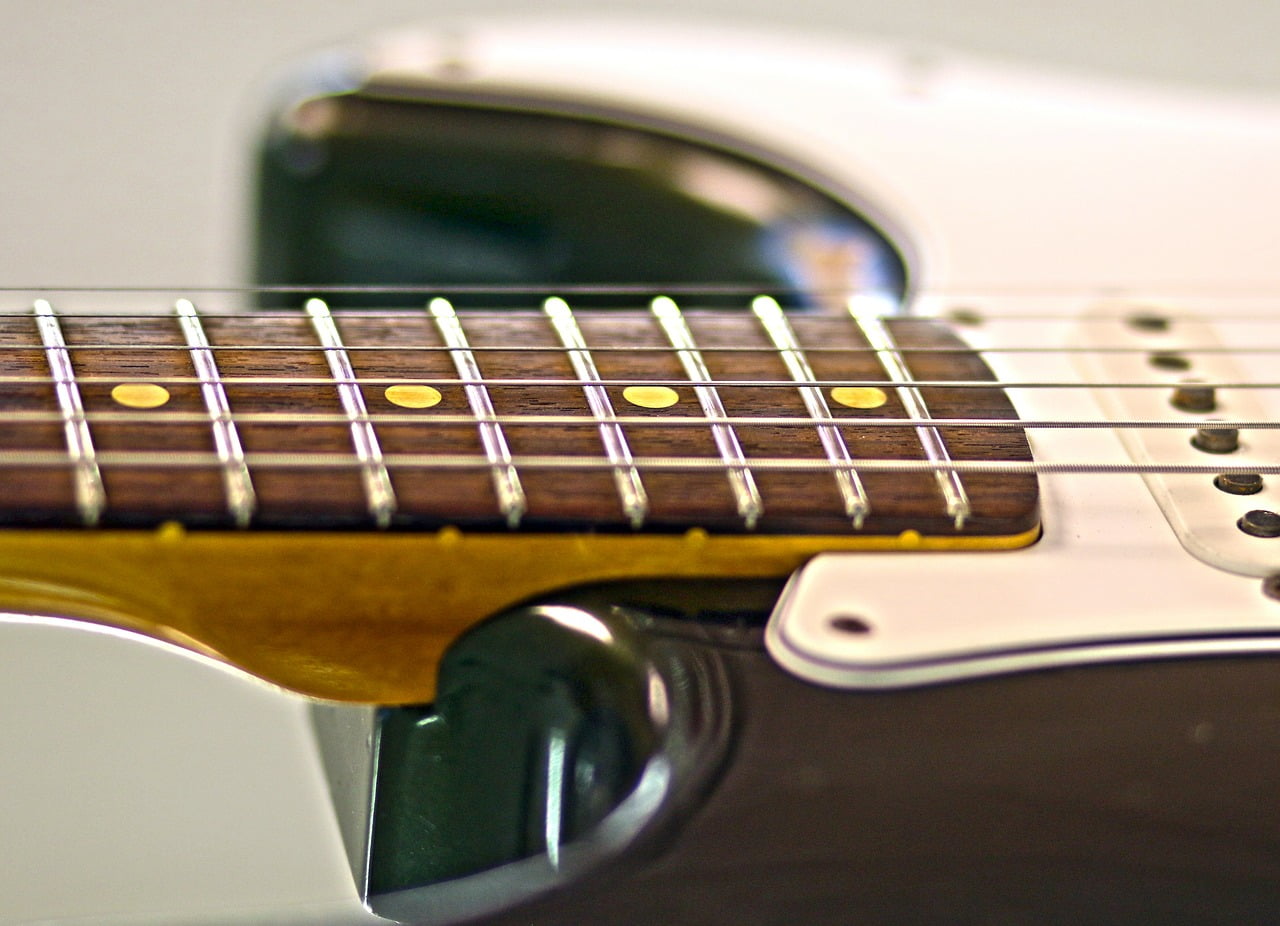
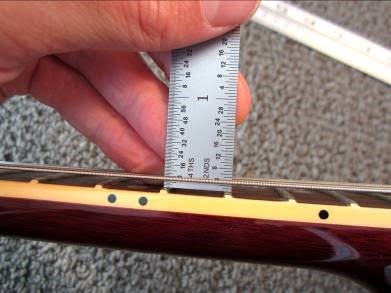
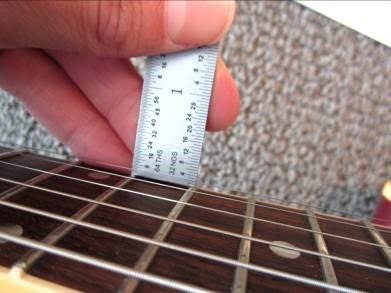
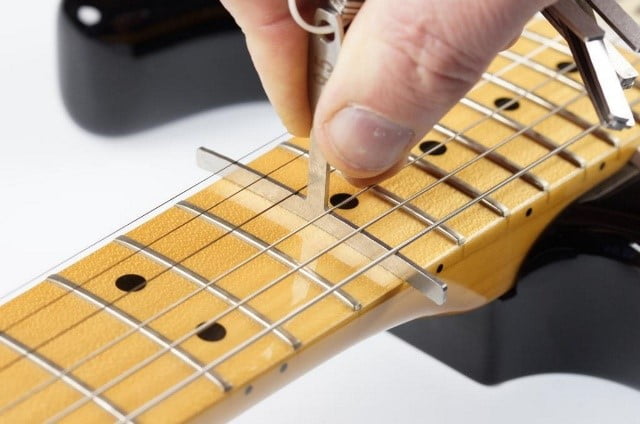
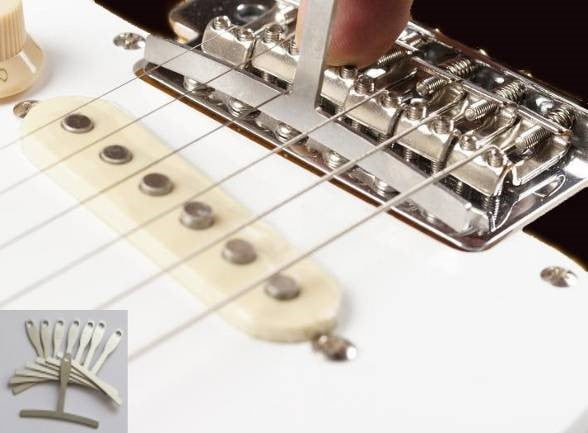
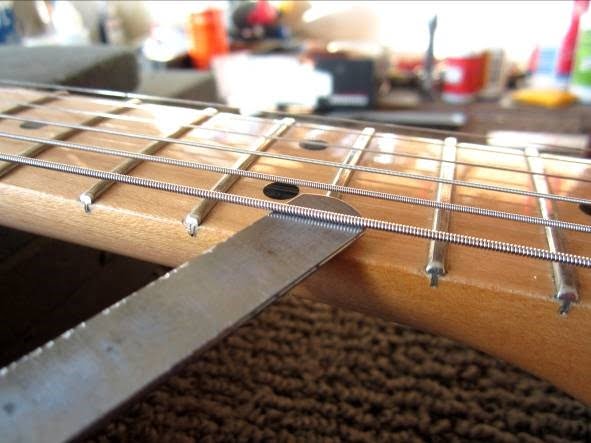
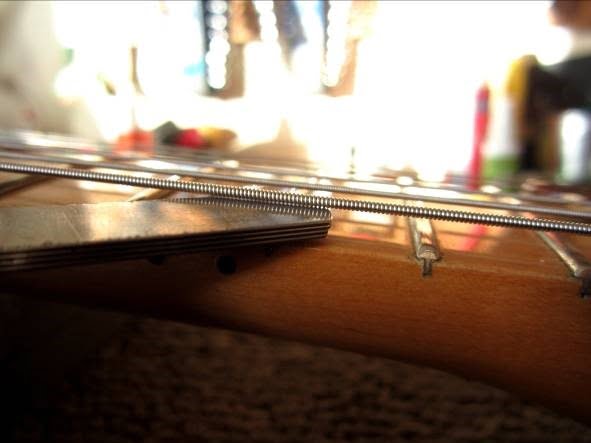




I didn’t have any idea how to adjust string height. Now I know. Very informative.